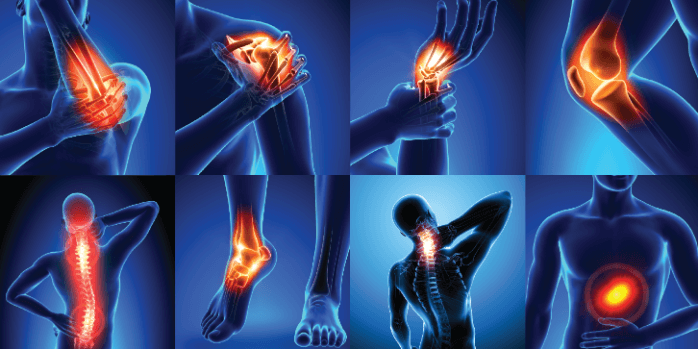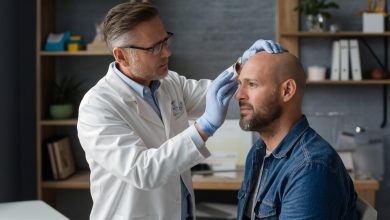
What exactly is the term “joint ache“?
The hands, feet, hips, knees, and spine are all commonly affected by joint pain, which is common and affects a large number of people. Chronic or intermittent pain is most likely the cause. Achy, stiff, or soreness are all possible sensations that might accompany joint pain. Some of the people who are impacted report experiencing a stinging, throbbing, or “grating” sensation. In addition, the joint may feel tense in the morning, but with movement and exercise, it will loosen up and become more comfortable. On the other side, excessive movement can exacerbate the pain.
A person’s ability to carry out critical tasks can be hindered by joint pain. A person’s first-class existence could be ruined by a severe joint soreness. It’s no longer enough to merely focus on the pain; treatment must also focus on the sports and abilities that have been damaged as well.
Who is more prone to suffering from joint pain?
Joint pain is extremely common in those who:
- Have you ever suffered an injury to a joint in your body before?
utilizing and/or overusing a muscle on a daily basis.
you may be suffering from rheumatoid arthritis or some other long-term medical condition
Depression, anxiety, or tension are all symptoms of depression.
- Do you have a BMI of more than 30?
Do not enjoy being ill or being ill and are not enthused by the experience.
When joints become inflamed and painful, aging is also a factor to consider. People in their middle and advanced years may also experience problems as a result of joint wear and tear and years of fatih escort use.
Joint Pain Treatment for a Variety of Joints
Treatment options for joint pain are available.
To treat skeletal muscle disorders including pain or damage, Pain O Soma 500mg is combined with rest and Joint Pain.
While pain cannot be cured, it can be regulated to provide relief to the patient. Pain can be relieved by using over-the-counter medications or engaging in a little exercise on a daily basis. Pain may be a sign of a more serious problem that requires medical attention or surgery.
Using a heating pad or ice pack on the affected area for brief periods of time several times a day can be encouraged as a simple at-home remedy. It’s also a good idea to take a hot bath.
- Exercising can aid in recovering strength and personality. Walking, swimming or other low-impact activities are the gold standards for aerobic workouts. Those who engage in high-intensity workouts or sports may want to reduce their intensity or switch to a lower-intensity schedule. In addition, sports that include a lot of stretching can be beneficial. Ask your doctor before starting or continuing any health regimen.
Weight loss may be recommended to reduce joint pressure if necessary.
It is possible to reduce discomfort using acetaminophen and anti-inflammatory medication (ibuprofen). Despite the fact that higher doses may require a prescription from a doctor, both of these medicines are available over the counter. To see if this is a good option for you if you have a history of stomach ulcers, renal illness, or liver disease, consult your doctor first.
There are also topical ointments and gels that can be massaged to the skin over the damaged joint region to help alleviate pain. In addition, some of those are available over the counter, while others require a doctor’s prescription.
- Dietary supplements, such as glucosamine, can also be helpful in relieving pain. Make an appointment with your doctor before taking any over-the-counter supplements
The doctor may also recommend: if the pharmaceutical medications or therapies do not work.
An orthotic device in the form of a brace or a walking stick can help support the joint and allow for easier movement. The doctor, physical or occupational therapist or social worker can help determine the best course of action.
As part of a well-balanced health plan, physical or occupational therapy can help to reduce pain and improve flexibility over time.
To help a person suffering from joint pain sleep better, antidepressants may be recommended.
- For a limited period of time, steroids are often provided as an injection into the joint, providing relief from pain and swelling.
Analgesics and anti-inflammatory medications (ache relievers).
Please keep in mind that all medications, even those purchased over the counter, have unique effects on unique individuals. One man or woman may find something valuable, whereas another may find it ineffective. When taking any medication, be sure to follow the doctor’s instructions to the letter and report any negative side effects.
What can you do to alleviate the pain in your joints?
If pain medication, physical therapy, or exercise fails to alleviate symptoms, surgical surgery may be necessary. Please discuss this with your doctor to ensure that surgery is required. Pain relief medication Aspadol is used for a wide range of acute pain, from mild to severe. The brain’s sensitivity to pain can likewise be altered.
There are numerous surgical methods available, including:
As a treatment method, an arthroscope, a flexible, fiberoptic tool used to replace cartilage or remove bone chips within or across the joint, is used by a medical expert to create one or three small incisions inside the skin over the joint.
Because the cartilage that cushions and protects the ends of the bones slowly wears away after multiple treatments, surgical surgery to upgrade the joint may be required if all else fails. This treatment can benefit hip, knee, and shoulder joints.
A metal or plastic prosthetic joint replaces bone fragments removed by a medical expert during a bone graft procedure. The majority of patients report long-term pain relief after undergoing this procedure, proving that it works.






